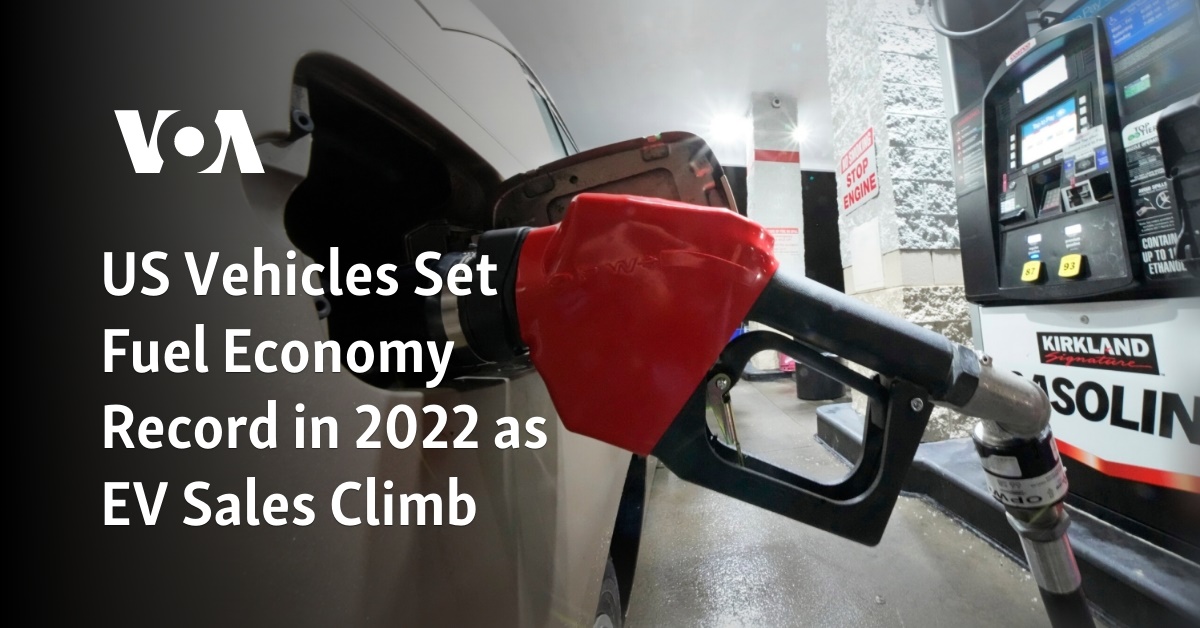Fuel Efficiency of U.S. New Vehicles Hits Record in 2022 Amid EV Sales Surge
In a notable advancement for automotive fuel efficiency, the United States saw its new vehicles reach an all-time high in 2022, averaging 11 kilometers per liter (26 miles per gallon)—the most significant annual increase in nearly a decade. This surge is largely attributed to the rising sales of electric vehicles (EVs), even as the major Detroit-based manufacturers lag behind their competitors in efficiency.
According to the Environmental Protection Agency (EPA), the gain in fuel economy represents a 0.2 kp/l (0.6 mpg) improvement over the previous year, marking a departure from the stagnation observed between 2020 and 2021. The agency credits electric vehicles and plug-in hybrid electric vehicles for contributing a 0.5 kp/l (1.2 mpg) boost to the 2022 average. Looking ahead, the EPA anticipates that fuel economy will climb to 11.4 kp/l (26.9 mpg) by 2023.
EPA Chief Michael Regan lauded the industry’s efforts, emphasizing the significance of these advancements in curbing climate change and reducing other harmful emissions. In an interesting twist, the report revealed that Tesla sold additional emissions credits, while General Motors and Mercedes-Benz were amongst those purchasing credits to comply with regulatory standards.
Among the major car manufacturers, Stellantis reported the lowest fuel economy, followed by General Motors and Ford. In contrast, Tesla led the pack in efficiency, with Hyundai and Honda close behind. The report also noted that vehicle horsepower, weight, and dimensions reached new highs in 2022—a trend that is expected to continue into 2023.
The production of EVs, plug-in hybrids, and fuel-cell vehicles accounted for 7% of the total in 2022, with projections to increase to 12% in 2023. Notably, the average driving range of electric vehicles has achieved a record high of 490 kilometers (305 miles), which is more than quadruple the range compared to 2011.
Consumer preferences also shifted, with a move away from traditional cars toward SUVs. Sales of sedans and wagons dropped to only 27% of the total market, while SUV purchases climbed to 54%.
Dave Cooke, a senior vehicles analyst at the Union of Concerned Scientists, pointed out that emissions from gasoline-powered vehicles have shown negligible improvement since 2015. He criticized automakers for their slow progress in enhancing the environmental performance of conventional gasoline vehicles, which continue to dominate new vehicle sales and will remain in use for the foreseeable future.
In a bold move to combat vehicle emissions, the EPA proposed significant emissions reductions for new vehicles through 2032, which could see a 56% cut in fleet average emissions compared to 2026 projections. This ambitious plan suggests that by 2032, electric vehicles could represent 67% of new vehicle sales.
Amidst this regulatory push, Dan Becker from the Center for Biological Diversity’s Safe Climate Transport Campaign urged the EPA to implement even stronger regulations. On the other hand, automakers and the United Auto Workers union have expressed their desire for the EPA to moderate its proposed measures, which are due to be finalized shortly.,
In 2022, the United States automotive market reached a significant milestone by achieving a record in fuel economy, largely driven by an increase in electric vehicle (EV) sales. The average fuel efficiency of new vehicles sold improved as automakers continued to introduce more fuel-efficient models, including hybrids, plug-in hybrids, and fully electric cars.
Electric vehicles, in particular, saw a surge in popularity, contributing to the overall improvement in fleet fuel economy. As battery technology advanced and became more cost-effective, EVs became increasingly accessible to a broader range of consumers. This shift was further bolstered by expanding charging infrastructure and government incentives aimed at reducing greenhouse gas emissions.
The rise in EV sales is part of a larger trend towards cleaner and more sustainable transportation. It reflects a growing consumer awareness of environmental issues and a desire for energy independence. Additionally, traditional internal combustion engine vehicles also made gains in fuel efficiency due to stricter regulations and technological advancements.
This trend towards higher fuel economy and increased EV adoption is expected to continue as automakers invest in electrification and as policies supporting the transition to cleaner vehicles are implemented. The record set in 2022 indicates a positive direction for the automotive industry and for efforts to mitigate the impact of transportation on climate change.



